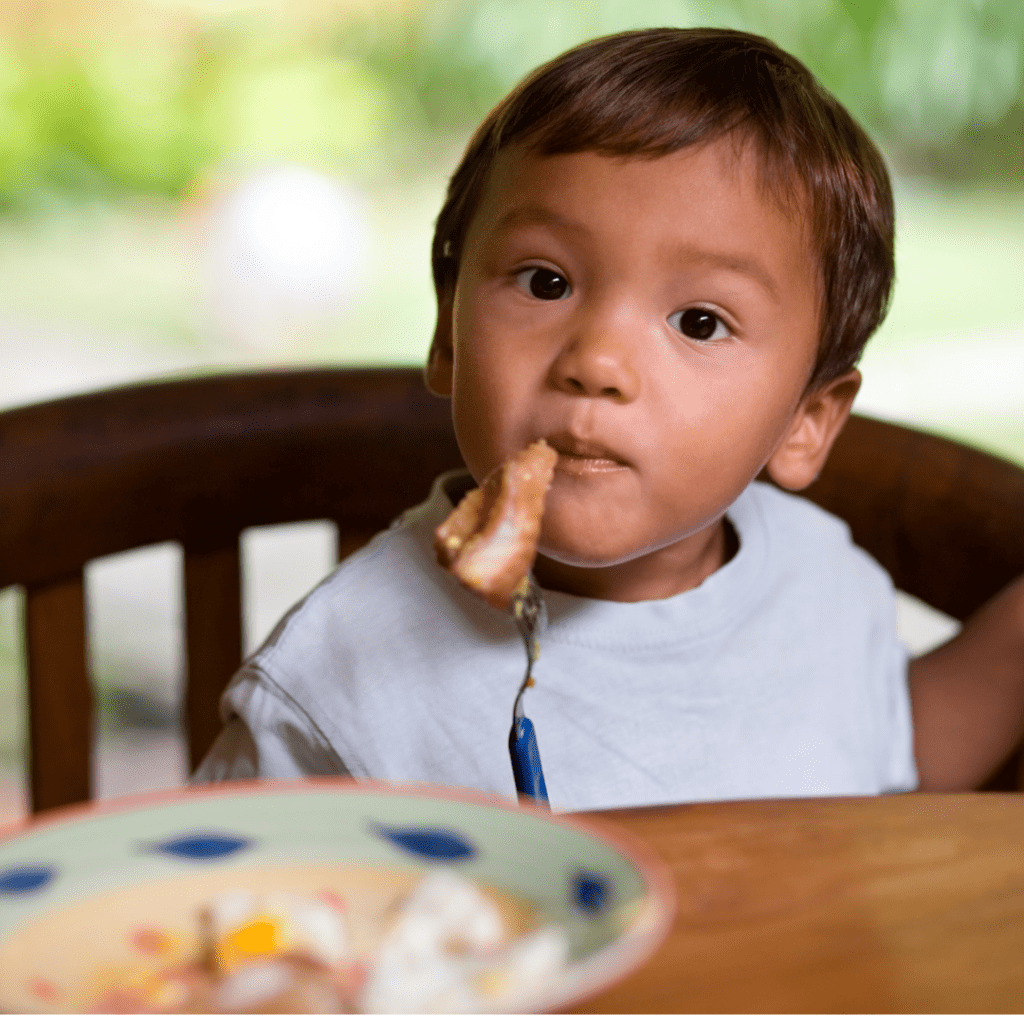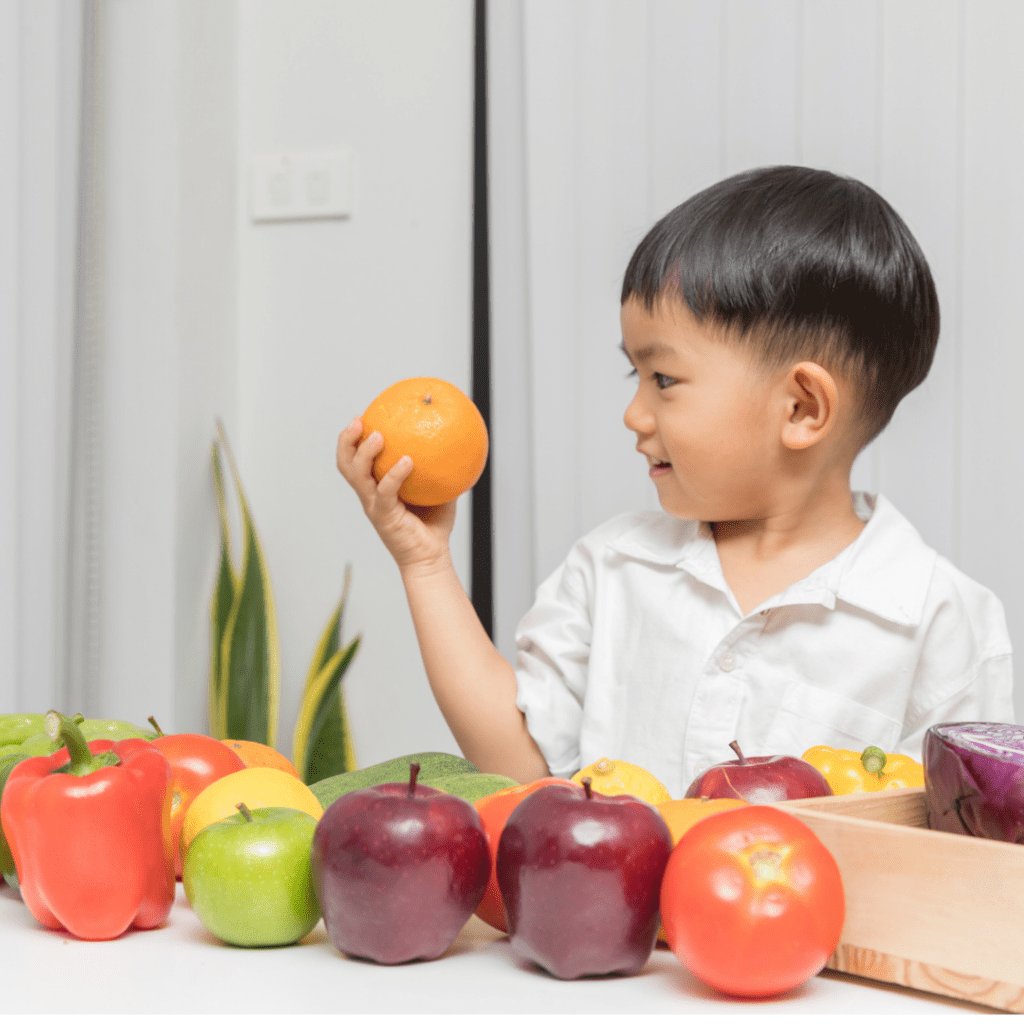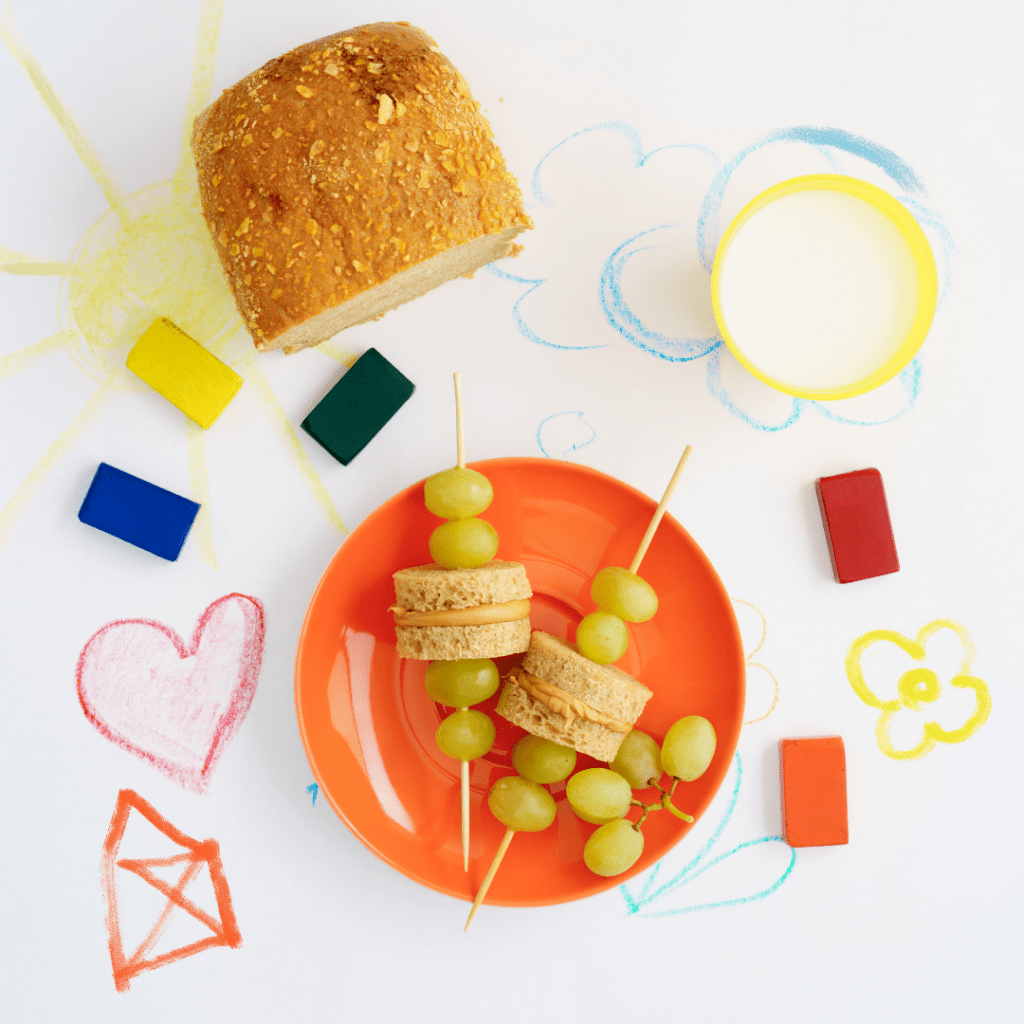Keeping it Real for the Real World
In part One of our 3-Part Raising Healthy Eaters Series, we talked about the importance of establishing the Basic Three Pillars for our children’s growth & development. Meeting your kids where they are at with the foods that they feel safest with (‘the known food’) within the 3 Key Pillars to raising Healthy Eaters as the foundational first step (aka – just get the nutrition in where you can).
Next, in Part Two, we discussed “HOW” to set the stage (not labelling foods “good” or “bad”, not using food as a praise or punishment, etc.). We discussed tips to foster a supportive environment and a healthy relationship with food and your child’s body in a supportive way.
Now, it is time to dive into the final part of the Raising Healthy Eaters series, and let’s keep it real for real life!
What exactly do I mean by “Keeping it real”? I mean that building a foundation of healthy eating habits for kids is no joke!

As a Chef, Recipe Developer, Mindful Eating Coach, and Nutrition & Wellness Practitioner, I am well versed on all the top strategies, what the research or food guides say our kids need in addition to ‘the experts’ opinions. This all sounds really good on paper….then you have a kid. Your kid turns 2 and hello, real world!
What’s on paper & what’s practice can be very different things with a kid who will literally do anything to avoid eating the steamed veggies you added to their plate. The close their eyes and cover their mouth and nose till they turn a shade of blue to avoid eating their greens is always my favourite one. Then, as parents, because our child is not “complying” with what all he guides and experts say they are eating, we begin to worry and feel bad! Label our kids as picky eaters cause their eating habits don’t match the “norm” or what we are told they should be eating. This can feel very stressful as a mom
Therefore, I want you to know that raising healthy eaters is hard work and you are not alone if you feel worried, frustrated, disheartened, or like you simply want to give up.
The good news is it is not hopeless!

Let’s take what we have learned in part one and two, along with some easy tips for real life to get you off the emotional rollercoaster which can be mealtime sometimes. I have included strategies from nutrition & childcare professionals I have worked from over the years, from my clients, and from my own personal experiences as both a professional and as a mom. Sometimes it can be useful to get a new perspective or hear a new idea to empower and inspire you to try again.
The disclaimer here is of course if your child has serious struggles such as not eating and is malnourished, which is more than just being a ‘picky eater,’ then speaking to a pediatrician or your family doctor is a good place to start.
Tip One: Decide That Mealtime Will No Longer Be A Battle
As the adult, we decide what foods to serve. The child chooses if they want to eat them and how much. If they only have a few bites, then they only have a few bites. If they are hungry, they will eat more, period. I know that this is not always easy, but it’s when we begin to make completely separate meals for our child apart from the family and/or they choose to not eat dinner and come to us an hour later and say they are hungry that we whip them up something else they want or give them “snack-y” foods that becomes the problem. Trust me, these small accommodations when they are little can become real problems in their teen years as it relates to nutrition.
Repeat after me, “I am not a short-order cook!”
Making a few additions to the plate, or selecting foods that you know your child enjoys makes sense (those familiar foods we discussed in part one), while adding a ‘new’ food to try on the side is a great approach. But truly stand your ground and follow some of the below tips to help encourage your child’s interest and willingness to try new foods while always remembering your kitchen is not a restaurant to take multiple orders. What you choose to make based on what works for your family is what’s for dinner. Period.

Tip Two: Focus On What Is Going Well Vs. What Is Not
When I work with families I often hear “my kid won’t eat……..”, we label our kids as ‘picky eaters’ and often can find ourselves focusing on what they don’t eat vs. the positives. What do they eat? When we focus on what they are already eating versus what we, as parents, wish they would eat, it can take the pressure off and give us a clearer path of where to start.
For example, I had a mom who told me the ONLY vegetable her child would eat was peas. So together, we explored other foods like peas, which fall within the legume family! So, we started with all the variations of peas (green peas, snow peas, edamame pods, snap peas, split peas, and black-eyed peas). They were all a success! Then, we explored more into the pea legume family (all the beans, all the coloured legumes, and of course nuts, which are actually from the legume family).
When we were done, we have a list of 15 foods that she loved all within the same vegetable family. Now she still would not eat the carrots her mom wishes she ate, but nutrient and vitamin variety in her diet. So, remember to focus on the positives of what they are eating and not what they are not

Tip Three: Get Them Involved In All Of It!!
When my kids were little, I would play a little game. We went to the grocery store on Saturday and every week I would have them run around the produce section and pick ONE ‘weird’ looking fruit or vegetable that we should try. They would run around and grab one thing and bring it back and I would be 100% food neutral. I never said, “oh gross eggplant, put it back” (even though I am not a fan of eggplant). I wanted my kids to make their own informed decisions about food instead of my preferences influencing them.
We would find a recipe and I would have them help make it or meal prep. Their involvement changed from when they were 3 years old to 13 years old. At 3 I would have them put the cut pieces of fruit into a container or make smoothie bags for the week; as they got older I would have them chopping and being more involved in the cooking. But, I always had them involved (go back to tip one. Your kitchen is not a restaurant, you are not doing all the work while everyone else is sitting and watching tv. Get them involved).
When it was time to try the “new food of the week,” we would all give it a go, be curious, and ask open ended questions. How do we like this? If no, why? Is it the texture or taste? If it’s the texture, could it be different next time? Etc. Really get them talking and connecting with food.
I can tell you there are foods my kids ate and ended up really enjoying that, without involving them in the steps of preparation and making choices, they would have never tried.

Tip Four: Make Changes Small
In part one, we talked about making small changes by adding a new food on the plate with something they love (i.e., add a few roasted beet slices on the plate with the Mac N’ Cheese). Small changes can be made to the look of the plate.
- Add a dip. It does not matter what dip! (yes, ketchup works). Remember a new food eaten is a new food eaten. So, pairing something new with a dip they love can make it a win.
- Change the shape. Yup! This can make the plate look playful and fun even though it’s really not! Cucumber-shaped flowers for the win. Little cookie cutters can be found at the dollar store or even on Amazon.
- Change the utensil. OH, this one is fun. Little colored plastic appetizer forks to get those kernels of corn make it impossible to resist engaging with new food.
- Change the variety. Take a food they love and change the form for variety, such as mashed potatoes instead of fries, dried mango slices instead of fresh mangoes, etc.
- Change the plate! Putting food into a fun-shaped ice cube tray or a muffin tin can make all the difference to changing things up vs. having food always on a plate or bowl.

Tip Five: Make it Fun
We have talked about some ways to make it fun already by changing the shape of the food, utensils, the plate, and even making the fun new weekly food game. These can all be a great way to reduce the stress and provide a healthy food relationship with your child and meals early on which will serve them in years to come. If you are stressed at mealtimes, then so will they, and we want food to be fun, nourishing, and a time for pleasure and satisfaction.
One of the foolproof ways to make food fun is to name it differently! “Apple Dumpling’s Pancakes, Mrs. Count Cholula’s Cereal, The Hulk Monster Smoothie, Dino Protein Bites, etc. All turn a regular recipe into something they want to eat! It’s mind-blowing how effective this is. I had Green Smoothies Muffins that the kids looked at and were “eww gross” and then I called them “Shrek’s Muffins” and they devoured them – lol!

If you are like “I don’t have the energy nor the creativity for that right now” that is okay! I have done it for you. My Raising Healthy Eaters Cookbook is 168-pages full-color, ebook. Simple to follow, instantly downloadable E-book. A beautiful food photo with every 125 kid-approved recipes (many with super fun names) in the book to help you and your child pick the perfect foods that suit their likes and needs.

A practical, fun, and stress-free approach to nourishing our kids from one parent to another. Picky toddlers? Fussy teens? From small kids to big kids, I have a clear plan of how you can ensure they are getting what they need for growth, development, health, and happiness. Check out the link below for more info and start effortlessly applying these strategies and enjoying these yummy and fun named recipes today.
In great health,
Jo
PS: I hope this Raising Healthy Eaters Series has been helpful to you. I love working with families and finding ways to make it work for them. Feel free to follow me on Instagram and Facebook or contact me to work together one-on-one.
Raising Healthy Eater Ebook! over 168-pages of top tips and tasty recipes!



